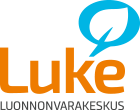For food contaminants, there is no harmonised monitoring programme. Official food control and monitoring of environmental and other contaminants are performed under the requirements of Community legislation (Commission Regulation (EC) No. 1881/2006, as amended) and on the basis of the Commission’s monitoring recommendations. The aim is to ensure that the levels of harmful contaminants in foodstuffs do not exceed the maximum permitted levels laid down in legislation and/or the levels considered safe for consumers, while providing information on the prevailing national situation. The studies coordinated by the Finnish Food Safety Authority Evira mainly focus on creating a national situational picture and preparing legislation.
The aim is to target sampling on a risk basis at wherever problems are most likely to occur. Monitoring and official control carried out by Evira is mainly targeted at domestic products, or products on the domestic market.
In the absence of a harmonised programme, the annual document compiled by EFSA only contains information on which compounds occurrence data has been sent and how much. In 2016, the EU countries sent more than 837,000 results on food contaminants to EFSA [1]. The results concerned more than 100 different compounds according to the three-grade classification. Comparisons between countries are, however, quite challenging because no comparative results on content are available in addition to information on the amount of data.
In general, it can be estimated that, for some contaminants, the situation in Finland is possibly better than in some other countries (e.g. cadmium in grains) but that, correspondingly, the opposite is true for some foods (e.g. dioxins in fatty fish from the Baltic Sea).
Reference
[1] EFSA (European Food Safety Authority) and Vernazza F, 2017. Summary of the 2016 Data Collection on Contaminant Occurrence Data. EFSA supporting publication 2017:EN-1217, 280 p. Link to the report
Photo in upper edge: Pixabay/Ralf Wetterle
